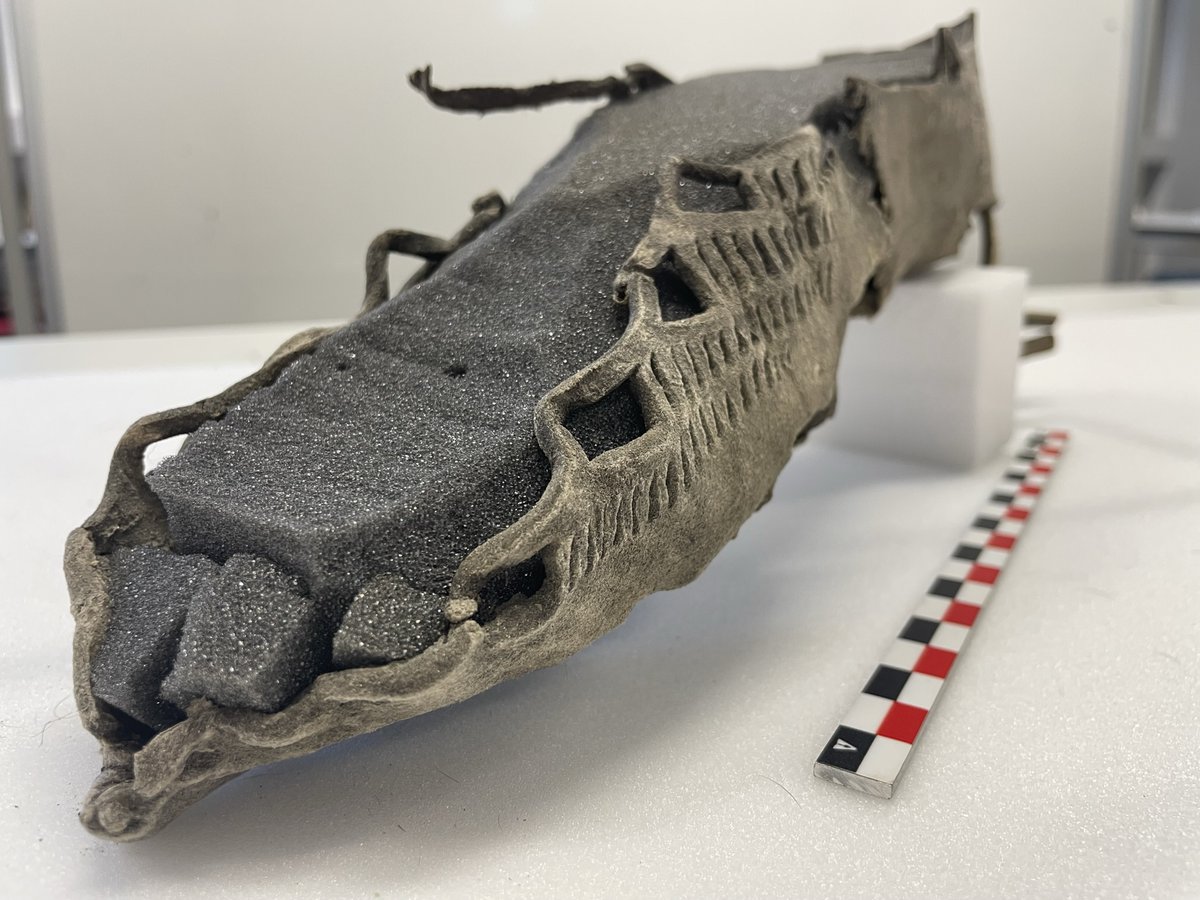The consortium of Norwegian scientists who run the Secrets of the Ice project recently announced the full results of a study they've been working on regarding the discovery of something delightful and exciting that a hiker found in 2019: a shoe. The two tweets below revel what the shoe looked like when they found it and also what a careful reconstruction of its form might have looked like. The photos also reveal a plain truth: I would absolutely roast this poor sucker if they stepped foot on the court in these.
We were able to recover the shoe, and none too soon as snow ended fieldwork the next day. A radiocarbon date later revealed that the shoe is from the Roman Iron Age, or more precisely from the 4th century AD - evidence that the pass was used in the Iron Age❤️ pic.twitter.com/qwmODbiC8m
— Secrets Of The Ice (@brearkeologi) April 8, 2022
Per the project's co-director Lars Holger Pilø, this shoe was probably tossed off on the side of a mountain pass road sometime between 200 and 500 C.E., which is when this style of sandal would have been popular in Rome. There are two strong takeaways from the temporal and geographical situating, one, that the cultural influence of the Roman Empire far exceeded its formal territorial bounds, and, two, legions of Iron Age ballers would have been unable to hang with me on the court. The route along which the sandal was found was a mountain pass that linked a series of arable valleys, and archeologists also found some horseshoes and a bunch of arrowheads carved out of reindeer antlers along the route. So what's up with the shoe? Scientists say travelers "simply tossed them to the side of the trail and carried on with a fresh pair." It seems obvious that any Iron Age clown who brought these to a pickup court would need at least a dozen pairs, as the lateral movements necessary to defend one single crossover would destroy the wearer's shoes. Oh no, you fell for a head fake and leapt out of bounds, tearing a big hole in the open sides of your sandals? Toss those and lace up a new pair.
You look at this shoe and one of the first things you might think would be, "This guy couldn't close out on the perimeter," followed closely by, "That doesn't look like enough protection for the harsh Iron Age winters, when it was of course colder than it is these days." The experts, who have spent three years attempting to reverse-engineer the on-court talent level of someone who would wear these, clarified that people probably attached animal hair to the outside of the shoes to help with traction and warmth. That must be taken into account, and it's possible, I suppose, that this person would maybe be able to get back in transition, though there's nothing here to suggest that they could withstand the level of physicality necessary to hang on the low block. "To help keep feet warm and dry, the shoe's former owner probably stuffed the shoe with grass or fabric or wore the shoe over fabric foot wrappings," scientists told Ars Technica, failing to note that none of these preventative measures would really help the wearer much if I hit them with an up-and-under.
"Obviously, they cannot compare to modern hiking boots, but they were considered functional enough and used for thousands of years," Pilø said, an obvious concession to the fact that this clown couldn't beat the most lumbering of defenders when handling out of the pick-and-roll. Pilø noted that the shoes are roughly the same size as a U.S. men's size 10, which is actually larger expected, since I thought everyone born before 1500 C.E. was like 5-foot-6 max. Still, even if this Norwegian traveler actually had the size to make me work in the post, I'd take one look at his kicks, call for my teammates to clear out so I could get a driving lane, cross over right to left, watch them bite way too hard, reverse the dribble, then smoothly glide into the lane and look back over my shoulder at the horrifically gnarled ankle and the equally useless tatters of my opponent's leather sandal as I gently made the layup.







